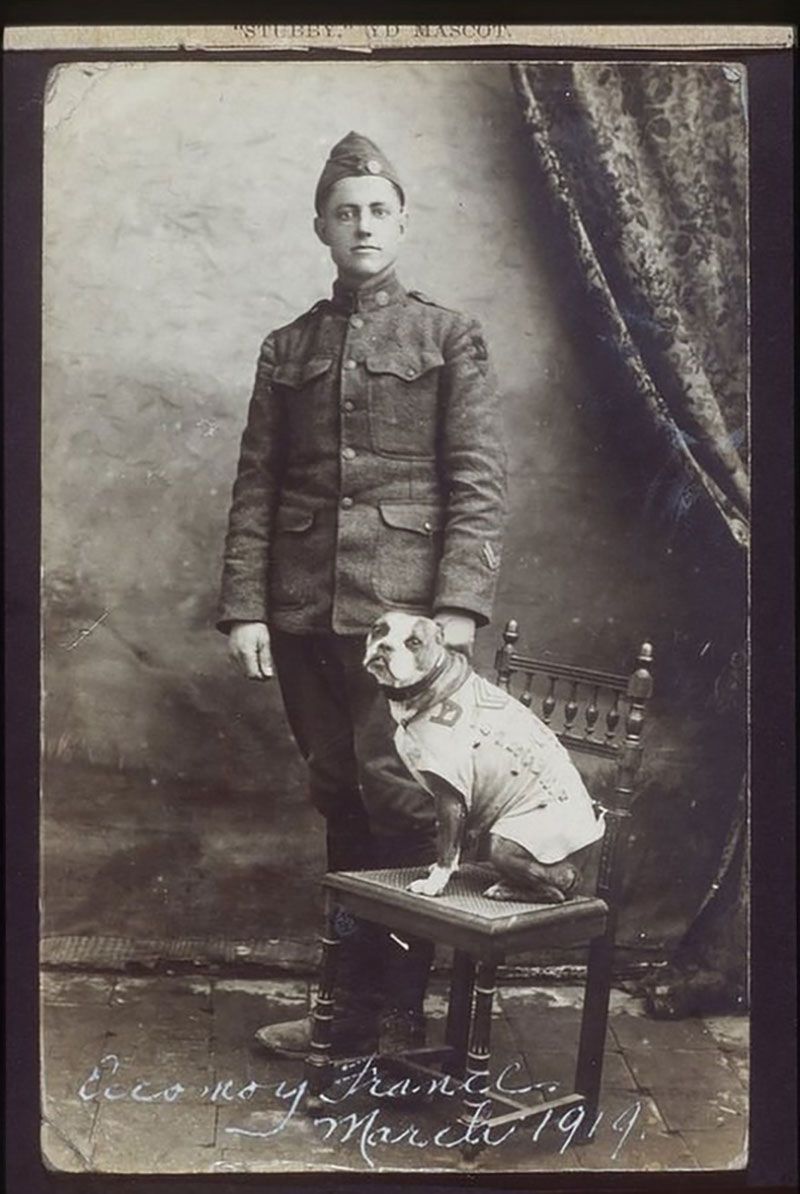Sgt. Stubby’s legacy
Stray dog turned WWI mascot, subject of new animated film, echoes soldiers’ bonds with dogs around the world
April 10, 2018

Any work that brings a piece of animal protection lore to a modern audience never fails to please me as a scholar of both the human-animal bond and the humane movement’s history. Given my affection for mascot narratives, I was excited to learn that the story of Stubby, arguably World War I’s best known mascot, had made it to the big screen.
A little more than one hundred years after his fateful encounter with a young soldier on the streets of New Haven, Connecticut, the animated film Sgt. Stubby: An American Hero tells the tale of Stubby, a brindle and white pit bull-type dog, and Robert Conroy, the soldier who found him scrounging for scraps near a military camp.
The two formed a fast bond, and Stubby learned the bugle call, the soldiers’ drills and even a doggie version of a salute.
Soon, Stubby and Conroy traveled together to France, serving with a unit that saw frontline action in four military offensives and 17 battles. During his time on the World War I battlefields, Stubby helped to locate and comfort wounded men, alert soldiers to poison gas attacks and capture a prisoner of war. Incredibly, he suffered shrapnel wounds and even survived a poison gas attack.
But Stubby was, above all, a morale booster for Conroy and countless other doughboys who knew him as the mascot of the 102nd Infantry, 26th Yankee division over the course of 18 months. Stubby was their good luck charm, a dog who displayed the kind of determined spirit that Conroy and other soldiers valued not just in their canine mascot but in one another.

Stubby came home to a hero’s welcome in April 1919, marched in humane society parades, and attended doughboy reunions with Conroy throughout the 1920s. He did a stint as the Georgetown University football team’s mascot while Conroy was a law school student there. He even visited the White House and met three American presidents.
Stories like Stubby’s have always been immensely appealing to children, and that’s one reason why mascots are a frequent subject of humane education lessons and content.
But the story of Stubby and Conroy is also echoed in the many accounts of soldiers who befriended or brought home dogs they befriended in conflict situations around the world. And at The HSUS, we’re keeping their memory alive in a recently formed partnership with the Veterans Health Administration (VHA), to promote veteran pet adoption and encourage veteran volunteerism at animal shelters, animal rescue groups and humane societies.
For humane societies, animal shelters, and rescue groups today, Stubby’s legacy remains powerful--beautifully underscoring, as Sgt. Stubby producer-director Richard Lanni suggests, “what animals can do when given a chance in life, regardless of their origins.”
Lanni’s film is not just worth the price of admission. It’s a priceless work that resonates with one of the humane movement’s core messages.

